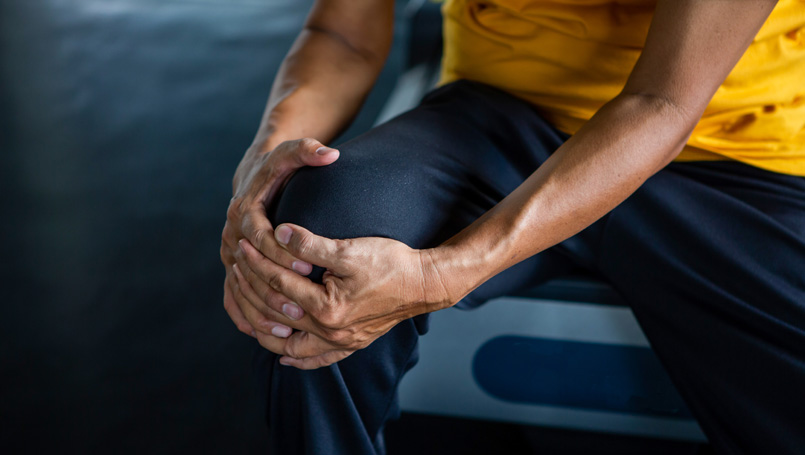Guide to Healthy Joints

When your joints don’t feel good, you don’t feel good. These 300 connection points are important for your daily life, as well as your workouts. Healthy joints can help you stay mobile as you age. While genetics do affect the strength of your cartilage, there is still plenty of measures you can take to stabilize, fortify, and pain-proof your joints.
Lace Up
Many people think that running can increase knee and joint pain, but recent research has proven that regular running actually strengthens the joints and protects against development of osteoarthritis later in life. As long as your cartilage and alignments are healthy, don’t be afraid to lace up and hit the pavement. However, if something hurts, get it checked out so you can develop a consistent running program that will be pain-free.
Be Consistent
Being active goes beyond your workouts. You should move around often throughout the day and try to avoid staying in one position for too long. Moving around for a few minutes each hour your awake helps and is a great way to increase your TDEE. Your body is meant to move, and your joints allow for movement. Movement eases joint stiffness, can reduce joint pain, and helps maintain a healthy weight.
Stay Strong
Strong muscles and bones provide support and stability for your joints, so keeping them strong is key. If you aren’t strength training already, adding exercises to your routine can help you build and increase the lean muscles that keep your joints safe and mobile. Your routine should include core-strengthening exercises for abdominals, back, and chest muscles. A strong core can help prevent problems with balance, falls, and accidents that could cause joint injury. Not to mention that having a strong core will help you in the rest of your lifts. So start pumping iron, but be sure to not forgo proper form for a heavier weight.
Use Correct Posture
Improper posture can add stress on your joints and increase your risk of injury to the surrounding muscles. Be mindful of your posture when sitting, standing, and performing repetitive motions. Be especially careful if you are carrying or lifting heavy objects. Being mindful of your posture can protect you from a painful injury or joint damage.
Incorporate Low-Impact Exercises
15-20 minutes of yoga or stretching can make a world of a difference. Just make sure that if you choose to stretch, never stretch a cold muscle. Before stretching, a 10-minute walk to get your muscles moving and warmed up is the way to go. Yoga and stretching improve the motion of the joints by keeping the tendons from getting tight and stiff. Tendons support the joints and muscles. If they’re not elastic, you can develop bad habits in how you use your joints, which can cause pain and other issues down the road. Other options include aquatic sports (like swimming), social sports like golf, simple walking, and cycling.
Eat Well
There is a lot of preaching to eat an anti-inflammatory diet if you’re having joint issues. However not all medical doctors are in agreement. Overall, controlling portions, limit processed foods, and have a variety of lean meat, vegetables, fruit, healthy fats, and whole grains seems the way to go. However, you should also keep in mind the benefits of vitamin D and calcium. Vitamin D is required for calcium absorption. You can get vitamin d through sun exposure, diet, or supplementation. Low calcium is associated with decreased bone density and increased risk of fractures.
Quit Smoking
If throwing money away for a smoking habit, fear of lung cancer, having yellow teeth or a smelly wardrobe isn’t enough to get you to quit, you should also be aware that smoking increases the risk of osteoporosis and bone fractures. Smoking also increases the likelihood of injuries involving bursitis or tendonitis. Smokers also are more likely to have low back pain and rheumatoid arthritis. So please, kick the habit. Your body and wallet will thank you.
- Login to post comments


